
Roots
Across generations, the narratives of our textured strands have unfolded, each coil and wave a testament to resilience, beauty, and wisdom passed through time. Our hair, a living crown, carries within its very structure the echoes of ancestral practices, a profound connection to the earth and the ingenious ways our forebears drew sustenance and care from the natural world. It is a heritage not merely of aesthetics, but of deep reverence for the elemental biology that shapes our very being, a legacy woven into the soul of every strand. To speak of cleansing textured hair, then, is to begin with the bedrock of this inheritance, exploring how ancient botanical ingredients offer properties that have long sustained and honored our unique hair patterns.

Hair’s Elemental Blueprint
The intrinsic nature of textured hair, with its varied curvatures and distinct protein arrangements, necessitates a cleansing approach that preserves its delicate balance rather than stripping it bare. Ancestral communities, long before modern chemistry, intuited this truth. They understood that harsh agents could disrupt the hair’s natural oils, known as sebum, which travel less readily down a coiled strand, leaving it prone to dryness.
The botanicals they turned to were not chosen by chance; they were selected for their inherent abilities to purify without compromising the hair’s integrity, speaking to a deep, observational science rooted in daily life. This understanding of hair’s elemental blueprint, its need for gentle yet effective purification, stands as a cornerstone of our heritage.
Consider the very concept of ‘cleanliness’ within these historical frameworks. It often extended beyond the mere removal of dirt, touching upon spiritual purification and social readiness. The plants used in cleansing rituals were therefore imbued with a significance that transcended their chemical properties, becoming part of a holistic approach to well-being that recognized the interconnection of body, spirit, and community. The selection of these ingredients was often guided by generations of trial and refinement, a collective wisdom encoded in oral traditions and daily practices.

The Botanical Alchemy of Purification
At the heart of many ancient botanical cleansers are compounds known as Saponins. These natural glycosides, found in various plants, possess a unique ability to produce a soapy lather when agitated in water. Their name, stemming from the Latin word ‘sapo’ for soap, clearly indicates their traditional use.
Saponins act as natural surfactants, lowering the surface tension of water to allow for the effective removal of oils and impurities without the harshness often associated with modern synthetic detergents. They offer a gentle yet thorough cleansing action, preserving the hair’s natural moisture barrier, a critical consideration for textured hair which, by its very structure, tends towards dryness.
Indigenous peoples worldwide, from the Americas to Africa, independently discovered and utilized these saponin-rich plants. Their knowledge, accumulated over millennia, reflects a sophisticated understanding of plant chemistry and its application for personal care. This botanical alchemy was not confined to a laboratory; it was a living science, practiced in homes and communities, passed from elder to youth, safeguarding healthy hair as a symbol of vitality and communal pride. This historical ingenuity offers a compelling counterpoint to the often-eurocentric narratives of scientific discovery, affirming the validity and depth of ancestral knowledge systems.
Ancestral practices reveal a profound wisdom in selecting botanicals that purify textured hair without stripping its inherent moisture.

Early Lexicons of Hair Care
The language used to describe hair and its care within historical communities provides a window into cultural values and practical understandings. Terms for hair textures, styles, and care methods were often deeply rooted in observations of nature or social roles. In many West African societies, for example, hair was not simply a physical attribute but a spiritual antenna, a connection to the divine and to ancestors.
Hair care rituals were integral to social status, marital standing, and even age. The tools and ingredients used held cultural weight, their names carrying the weight of tradition and shared experience.
- Ose Dudu ❉ A Yoruba term for African Black Soap, underscoring its historical and geographical ties to West African heritage.
- Yucca ❉ A plant whose name itself, in many Indigenous American languages, refers to its use as a cleansing and fiber source.
- Qasil ❉ Derived from the leaves of the Ziziphus spina-christi tree, this East African cleanser speaks to the local botanical wealth and traditional remedies.
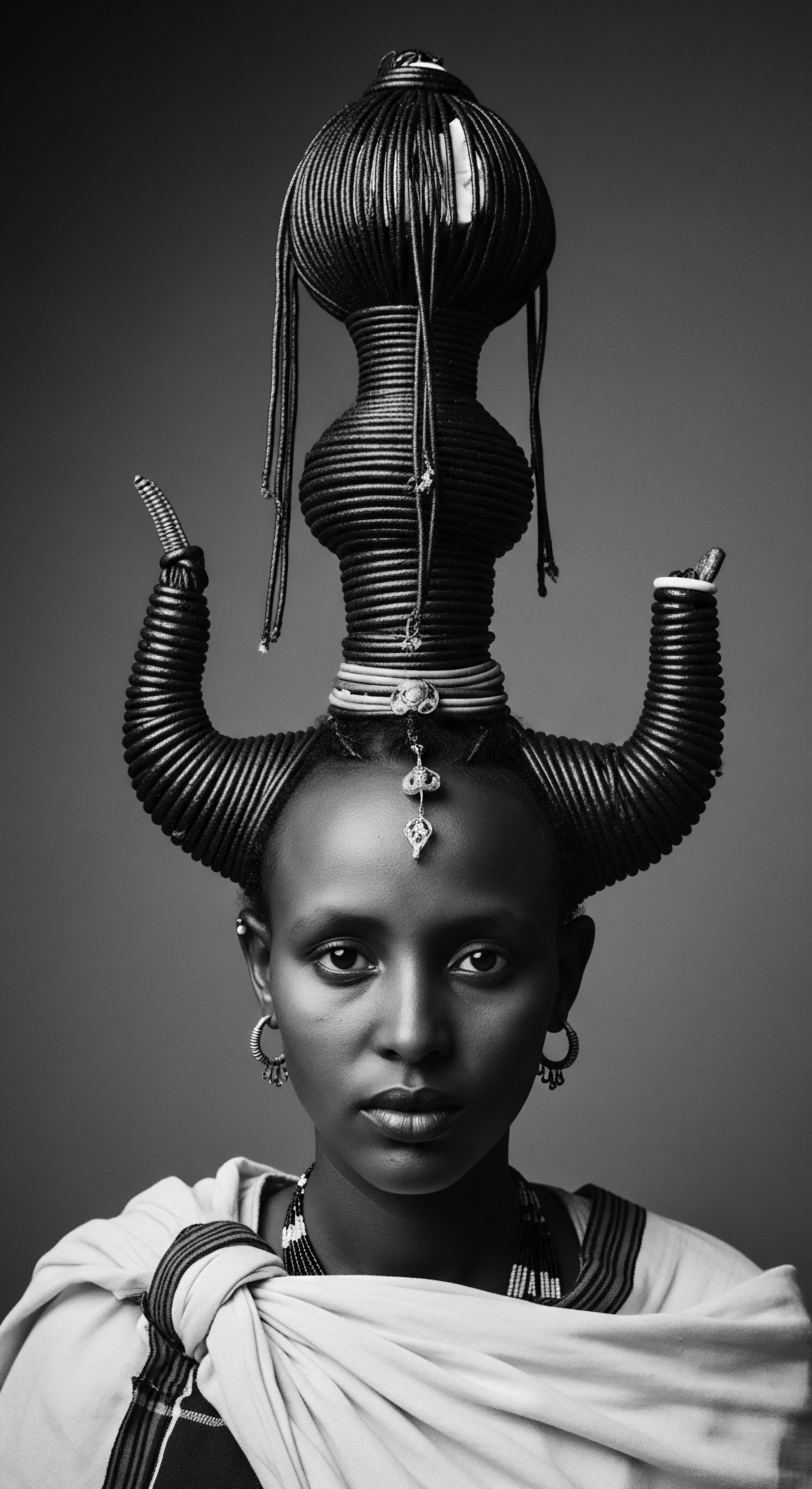
Hair’s Life Cycle Through an Ancestral Lens
Ancestral hair care was deeply attuned to environmental rhythms and the life cycle of the hair itself. Dietary practices, climate conditions, and available local flora all shaped the ingredients and methods employed. Hair health was understood as a reflection of overall well-being, an aspect of holistic living. In communities where access to abundant, nutrient-rich foods was varied, botanicals might also offer supplemental nourishment or address specific scalp conditions that impacted hair growth.
A powerful historical example of the deep connection between hair and identity, particularly within Black communities, highlights the importance of these ancestral practices. During the transatlantic slave trade, one of the first dehumanizing acts inflicted upon enslaved Africans was the forced shaving of their heads. This act aimed to strip individuals of their cultural identity, severing a profound spiritual and communal link that hair represented in their homelands. Yet, even in the face of such brutality, the resilience of Black people saw the preservation and evolution of historical hairstyles and care methods, passed down in secret, becoming powerful symbols of resistance, pride, and continuity of heritage.
(Gieskes-Mwamba, n.d.; Byrdie, 2024). This historical example underscores that cleansing, styling, and hair care for textured hair have always been more than cosmetic; they are acts of cultural preservation and self-affirmation, echoing through centuries of struggle and triumph.
| Botanical Ingredient African Black Soap (Ose Dudu) |
| Primary Origin/Heritage West Africa (Ghana, Nigeria) |
| Cleansing Property Natural surfactants from plantain skins and cocoa pods; deep yet gentle cleansing. |
| Cultural Significance Symbol of communal craftsmanship, spiritual purification, connection to ancestral lands. |
| Botanical Ingredient Yucca Root |
| Primary Origin/Heritage Indigenous North America |
| Cleansing Property Saponins creating a sudsy lather, believed to strengthen strands and prevent hair loss. |
| Cultural Significance Sacred plant, used in ceremonial washes, linking personal care to the land and tradition. |
| Botanical Ingredient Qasil Powder (Ziziphus spina-christi) |
| Primary Origin/Heritage East Africa (Somalia, Ethiopia) |
| Cleansing Property Natural cleansing and exfoliating properties, used for hair and skin. |
| Cultural Significance Daily beauty staple, reflecting traditional reliance on local flora for holistic care. |
| Botanical Ingredient These ancient botanicals demonstrate a sophisticated understanding of hair's needs within diverse cultural contexts. |
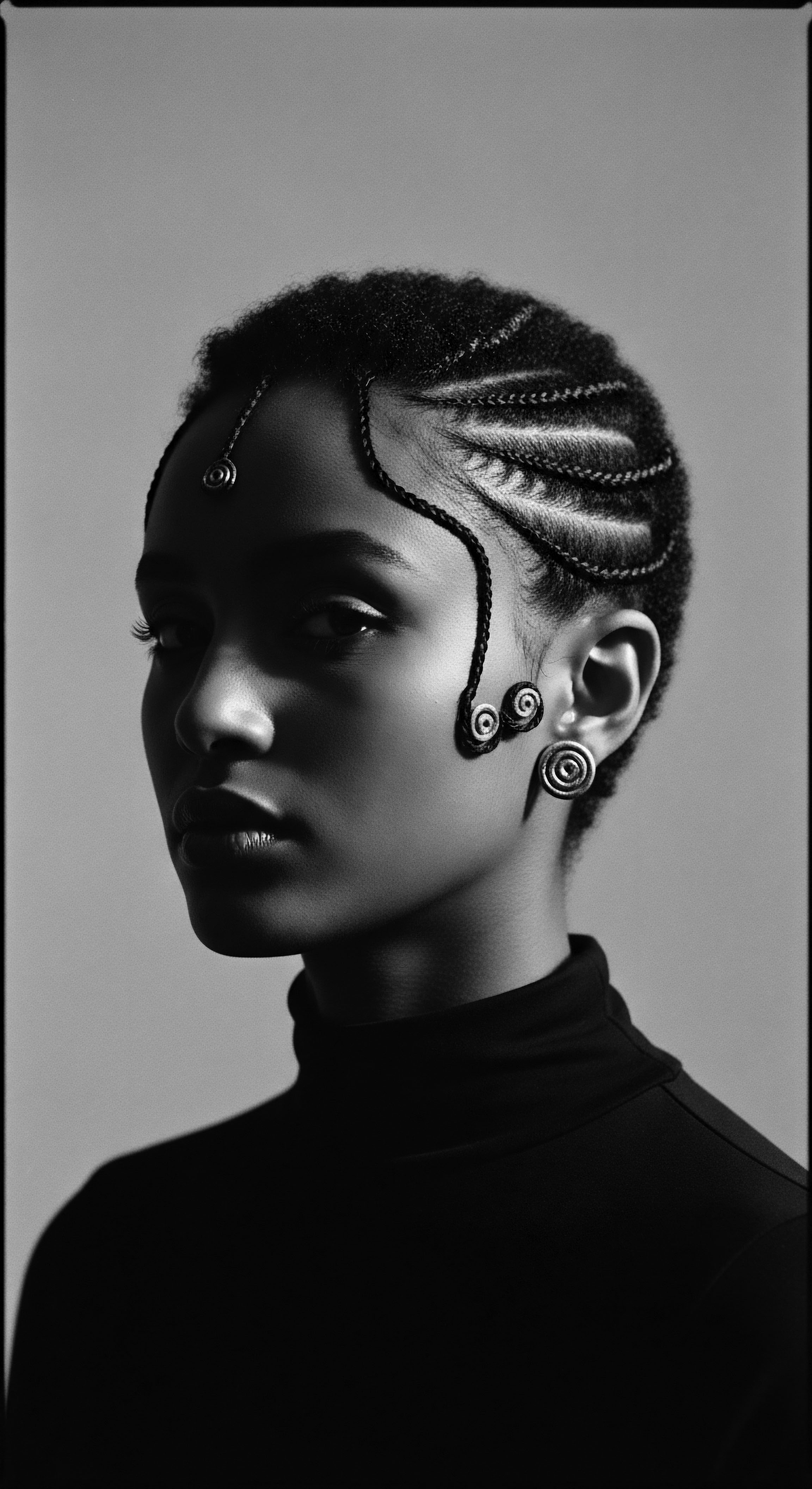
Ritual
The act of cleansing textured hair, particularly within our ancestral lines, was rarely a solitary, hurried task. Instead, it unfolded as a deliberate ritual, often communal, steeped in intention and generational wisdom. This was not merely about removing impurities; it was about nurturing a connection, honoring the unique properties of hair, and preparing it for the artistry of styling that so often spoke to identity and belonging. The deeper exploration of what ancient botanical ingredients offer for cleansing begins to reveal these intricate layers, moving beyond simple function to the very soul of the practice.
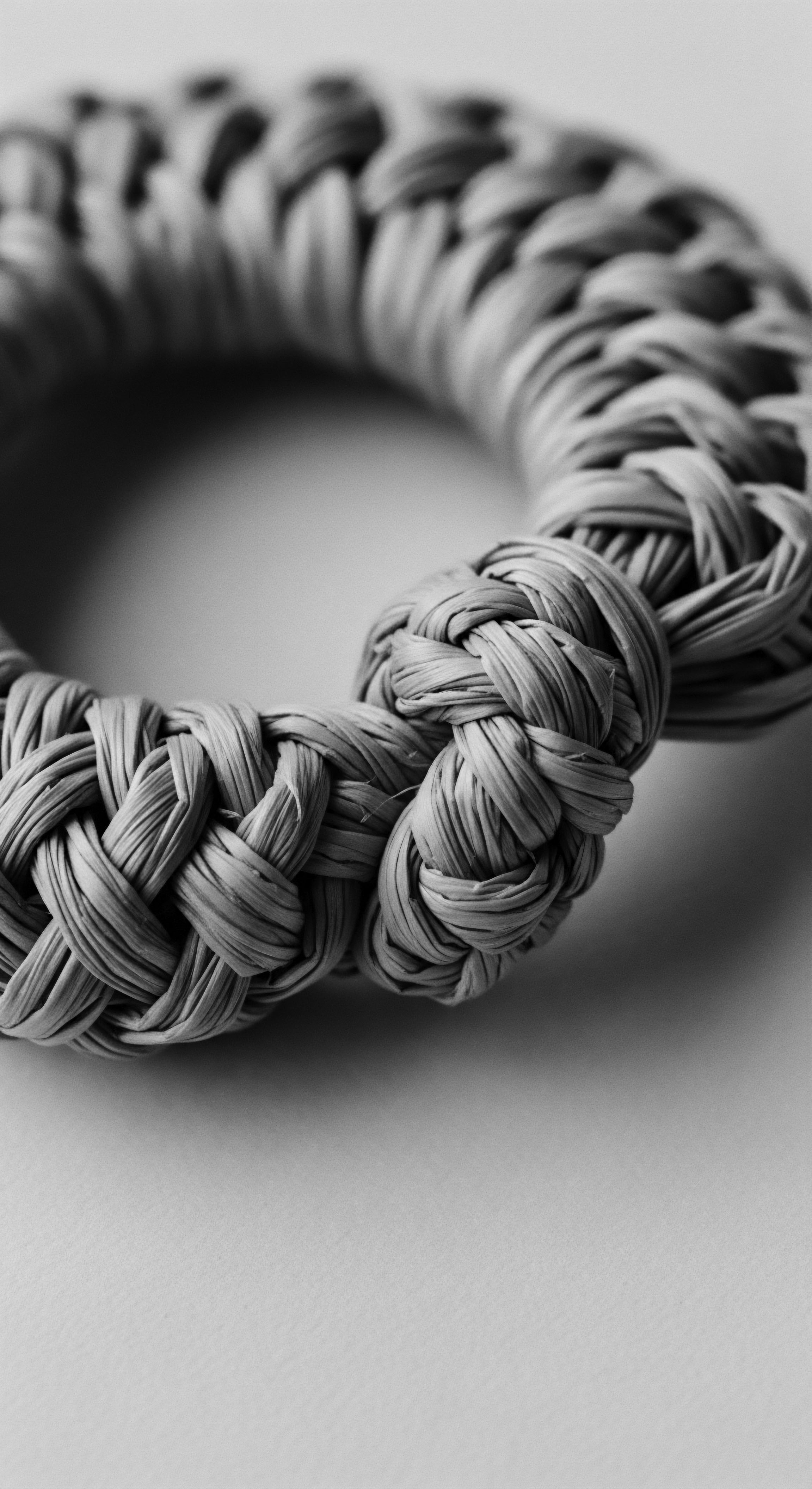
The Cleansing Ceremony’s Flow
Cleansing in ancestral communities possessed a rhythm, a flow that respected the hair’s natural state. It was not a battle against the hair’s texture, but a partnership with it. The process might involve gentle kneading of botanical pastes into the scalp, allowing the natural saponins to work their magic without stripping the strands.
Rinse water, collected and often infused, played its own part, sometimes seen as a conduit for spiritual cleansing. This thoughtful approach stands in stark contrast to the aggressive lather and rinse cycles often imposed by modern, one-size-fits-all products, which can leave textured hair feeling brittle and deprived.
The cleansing ceremony often served as a prelude to elaborate styling, itself a social event. For instance, in many African communities, braiding hair was not just about the finished look; it was a communal activity, strengthening bonds between mothers, daughters, and friends. The preparatory cleansing, therefore, was a shared moment, a time for stories, songs, and the transmission of knowledge. This communal aspect speaks to the profound integration of hair care within the social fabric, making the cleansing process a tender thread in the tapestry of daily life.

How Did Cleansing Shape Traditional Hairstyles?
The selection of cleansing botanicals often influenced the types of styles that were possible and popular. Gentle cleansers meant hair retained more of its natural oils and elasticity, allowing for intricate braiding, twisting, and coiling that required pliable, healthy strands. If harsh cleansers had been the norm, such complex styles might have been difficult to achieve or maintain without causing damage. The ability of certain botanical ingredients to cleanse without over-drying directly supported the tradition of protective styling, which historically shielded textured hair from environmental elements and minimized manipulation.
African Black Soap, for example, known as ‘ose dudu’ in Yoruba, offered a cleansing foundation that supported the styling practices of many West African communities. Its gentle, purifying action, derived from ingredients like plantain skins and cocoa pods, prepared the scalp for long-term protective styles by removing buildup without stripping essential moisture. This allowed styles like cornrows and Bantu knots, which have deep historical roots, to be set on a healthy scalp, promoting longevity and minimizing breakage. The cleansing method was inextricably linked to the styling outcome, a testament to the integrated nature of ancient hair care systems.

Regional Cleansing Customs
Across continents and within diverse Black and mixed-race communities, cleansing customs varied, reflecting local plant availability and specific cultural needs.
In West Africa, the prominence of African Black Soap cannot be overstated. Handcrafted from ingredients like plantain skins, cocoa pods, and shea tree bark, its production was and remains a communal enterprise. This soap, traditionally used for body, face, and hair, possesses natural antibacterial and exfoliating properties, cleansing the scalp and removing buildup without stripping natural oils.
It provides vitamins A and E, supporting scalp health. The very making of this soap, a practice passed down through generations, embodies the region’s commitment to sustainable, plant-based care.
Across the Atlantic, Indigenous North American tribes turned to their own abundant flora. The Yucca Root was widely used as a natural shampoo. The roots were peeled, crushed, and mixed with water to create a sudsy pulp. This traditional yucca shampoo was valued for its cleansing properties and also believed to strengthen hair strands and prevent baldness.
The Costanoan tribe, for instance, prepared yucca flowers as a strong tea to rinse their hair. The Ohlone people crushed yucca seeds and blended them with bear fat as a hair tonic. This reliance on local botanicals for cleansing highlights a deep respect for the land and its resources, a common thread across many ancestral care traditions.
In East Africa, particularly among communities in Somalia and Ethiopia, Qasil Powder, derived from the dried leaves of the Ziziphus spina-christi tree, offered a unique cleansing alternative. It acts as a gentle exfoliant and cleanser for both skin and hair, celebrated for its ability to purify without harshness. This ingredient speaks to a heritage of utilizing arid-land botanicals, adapting practices to the unique environmental offerings.
- African Black Soap (Ose Dudu, Alata Simena) ❉ Utilized across West Africa, crafted from plantain skins, cocoa pods, palm oil, and shea butter.
- Yucca Root ❉ Found in Indigenous North American hair care, its saponins created a gentle, strengthening lather.
- Qasil Powder (Ziziphus spina-christi) ❉ A staple in East African communities for cleansing and exfoliating hair.
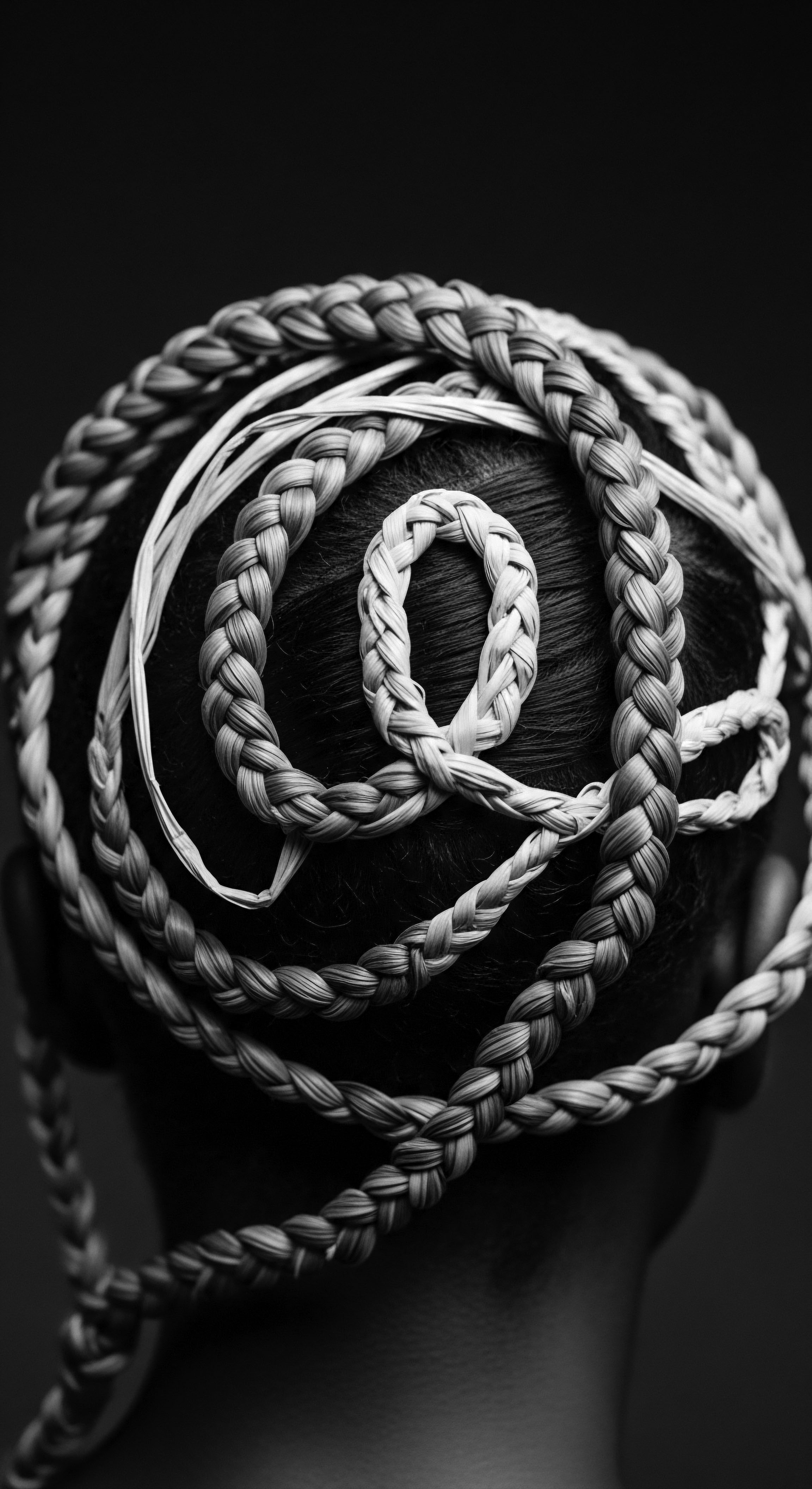
The Cleansing Toolkit of the Past
The tools that accompanied these ancient cleansing rituals were as simple and ingenious as the ingredients themselves. Often, human hands were the primary implements, skillfully massaging botanical pastes into the scalp and working them through the hair. Beyond hands, tools might include ❉
- Gourds or Wooden Bowls ❉ Used for mixing and holding the botanical cleansers.
- Natural Sponges or Fibers ❉ Employed for gentle scrubbing and distribution of the cleansing agents.
- Wide-Toothed Combs ❉ Carved from wood or bone, these were used carefully to detangle hair after cleansing, minimizing breakage on wet, vulnerable strands.
These tools, simple yet effective, underscore the resourcefulness of ancestral communities, who created sophisticated care systems from what the earth provided. The legacy of these tools speaks to an intimate relationship with nature, where every element of the care regimen was considered and purposeful.

How Do Ancient Lathers Inform Modern Hair Care?
The echoes of ancient cleansing practices resonate deeply within contemporary textured hair care. Modern formulations that prioritize sulfate-free, moisture-retaining cleansers are, in essence, validating the wisdom of our ancestors. The market’s increasing awareness of natural ingredients and their benefits for textured hair can be seen as a return to these foundational principles. Brands today draw inspiration from age-old practices that prioritized hydration and strength.
Consider the current popularity of African Black Soap Shampoos. These products often blend the traditional soap with additional botanical extracts, offering a cleansing experience that honors its West African origins while meeting modern demands for convenience and specific hair concerns. This evolution demonstrates a living, adapting heritage, where the wisdom of the past continues to shape the future of textured hair care. It is a testament to the enduring efficacy of these ancient botanicals, their principles now being reimagined for new generations, always with respect for the deep roots from which they sprung.

Relay
The enduring legacy of ancient botanical ingredients in cleansing textured hair is not a relic of the past; it is a living, breathing tradition, continuously relayed through generations, adapting yet retaining its core wisdom. This is where the profound intersection of historical practice, scientific understanding, and personal well-being truly comes into its own. It is about honoring the past while embracing the present, ensuring that the unique needs of textured hair are met with a care system that resonates with its profound heritage.

The Holistic Path to Hair Well-Being
Ancestral wisdom teaches us that hair health is an extension of overall well-being. Cleansing, therefore, was not a singular act but a component of a larger holistic philosophy that considered diet, emotional state, and spiritual connection. Many ancient cultures viewed hair as a spiritual antenna, a conduit for energy and wisdom.
The cleansing process, in this context, served to purify not just the physical strands but also the energetic field around the head, preparing individuals for spiritual practices or important life events. This perspective underscores a deeper purpose for hair care, one that extends far beyond surface appearance.
The incorporation of specific botanical ingredients often linked to medicinal or spiritual properties in these cleansing rituals highlights this holistic view. For example, some Indigenous North American tribes utilized plants like Sweetgrass not only for its fragrant properties in hair washes but also for its sacred significance in ceremonies, believed to purify individuals and their surroundings. This intertwining of practical cleansing with spiritual intent created a regimen that nourished both the physical and metaphysical aspects of self.

What Botanical Components Offer Deep Cleansing Benefits?
A closer look at the key ancient botanical ingredients reveals the specific mechanisms behind their cleansing prowess, validating ancestral choices through modern scientific understanding.
- African Black Soap ❉ This remarkable cleanser, a cornerstone of West African hair heritage, derives its potent cleansing properties from the ash of burnt plantain skins, cocoa pods, and palm tree leaves, combined with traditional oils like shea butter and coconut oil. The ash acts as a natural exfoliant, gently removing dead skin cells and product buildup, while the oils provide conditioning. Research indicates its effectiveness in clarifying the scalp and unclogging hair follicles, stimulating circulation, and delivering essential vitamins A and E for scalp health. Its antibacterial and antifungal properties, stemming from the plantain skins and natural oils, help manage conditions like dry, itchy, and flaking scalps. This combination delivers a thorough yet gentle cleansing experience for textured hair.
- Yucca Root ❉ Revered by numerous Indigenous North American tribes, the yucca plant’s roots are exceptionally rich in Saponins, natural compounds that produce a lather similar to soap. When crushed and mixed with water, these saponins create a gentle, sudsy wash. Beyond its cleansing action, yucca is historically noted for its perceived ability to strengthen hair and potentially prevent hair loss, reflecting a long-held belief in its restorative qualities for scalp and hair. The use of yucca represents a direct connection to the land and a deep appreciation for its natural bounty.
- Qasil Powder ❉ Sourced from the Ziziphus spina-christi tree, qasil is a traditional East African botanical renowned for its cleansing and exfoliating benefits. The finely ground leaves, when mixed with water, form a paste that can purify the scalp and strands without stripping. Its use aligns with the holistic wellness practices of communities in Somalia and Ethiopia, where it is a daily beauty staple that honors traditional botanical knowledge.
- Rhassoul Clay ❉ Originating from the Atlas Mountains of Morocco, rhassoul clay (also known as Ghassoul clay) has been used for centuries as a hair and skin cleanser. It possesses unique absorbent properties, allowing it to draw out impurities, excess oil, and product buildup from the scalp and hair without harsh dehydration. Its mineral-rich composition contributes to improved elasticity and overall hair texture, providing a gentle yet effective cleansing experience particularly beneficial for sensitive or easily stripped textured hair.
| Traditional Botanical African Black Soap |
| Ancestral Application Handcrafted soap for body, face, and hair; cleansing and spiritual purification. |
| Scientific Basis for Cleansing Saponins from plantain/cocoa ash, oils (shea, palm) provide gentle surfactants, antibacterial properties. |
| Modern Product Parallel (Heritage Link) Sulfate-free black soap shampoos for deep cleansing and scalp health. |
| Traditional Botanical Yucca Root |
| Ancestral Application Crushed root wash; believed to strengthen hair, prevent baldness. |
| Scientific Basis for Cleansing High saponin content creates natural lather, effectively lifting dirt without harshness. |
| Modern Product Parallel (Heritage Link) Natural shampoos and scalp treatments featuring yucca extracts for gentle cleansing and scalp benefits. |
| Traditional Botanical Qasil Powder |
| Ancestral Application Mixed with water for cleansing paste; also used for exfoliation. |
| Scientific Basis for Cleansing Fine particles provide mild physical exfoliation; natural cleansing compounds in Ziziphus leaves. |
| Modern Product Parallel (Heritage Link) Powder-to-paste cleansers, detoxifying scalp masks, herbal shampoos. |
| Traditional Botanical Rhassoul Clay |
| Ancestral Application Clay mask/wash for hair and skin; purifies, moisturizes. |
| Scientific Basis for Cleansing High mineral content (silica, magnesium, calcium) adsorbs impurities and oils. |
| Modern Product Parallel (Heritage Link) Clay-based detox masks, co-washes for gentle cleansing and mineral enrichment. |
| Traditional Botanical The ingenuity of ancestral cleansing practices continues to provide a blueprint for contemporary textured hair care solutions. |

Preserving Hair’s Story
The wisdom embedded in ancestral cleansing methods offers profound lessons for modern care. It reminds us to seek balance, to prioritize scalp health as the foundation for hair growth, and to value ingredients that work in harmony with our hair’s unique structure. Preserving hair’s story means understanding that every wash, every treatment, carries the weight of history and cultural significance. It moves beyond mere product application to a mindful connection with the botanical world and the traditions it represents.
Ancient botanical cleansers offer more than just purification; they provide a connection to deep cultural practices and holistic well-being.
The growing movement towards ‘clean’ beauty and natural ingredients is, in many ways, a homecoming to these ancient practices. It represents a collective acknowledgement that nature has always held the answers to our well-being, including the care of our crowns. The focus on plant-based alternatives for textured hair cleansing allows individuals to reconnect with a heritage of self-care that is both effective and deeply meaningful.
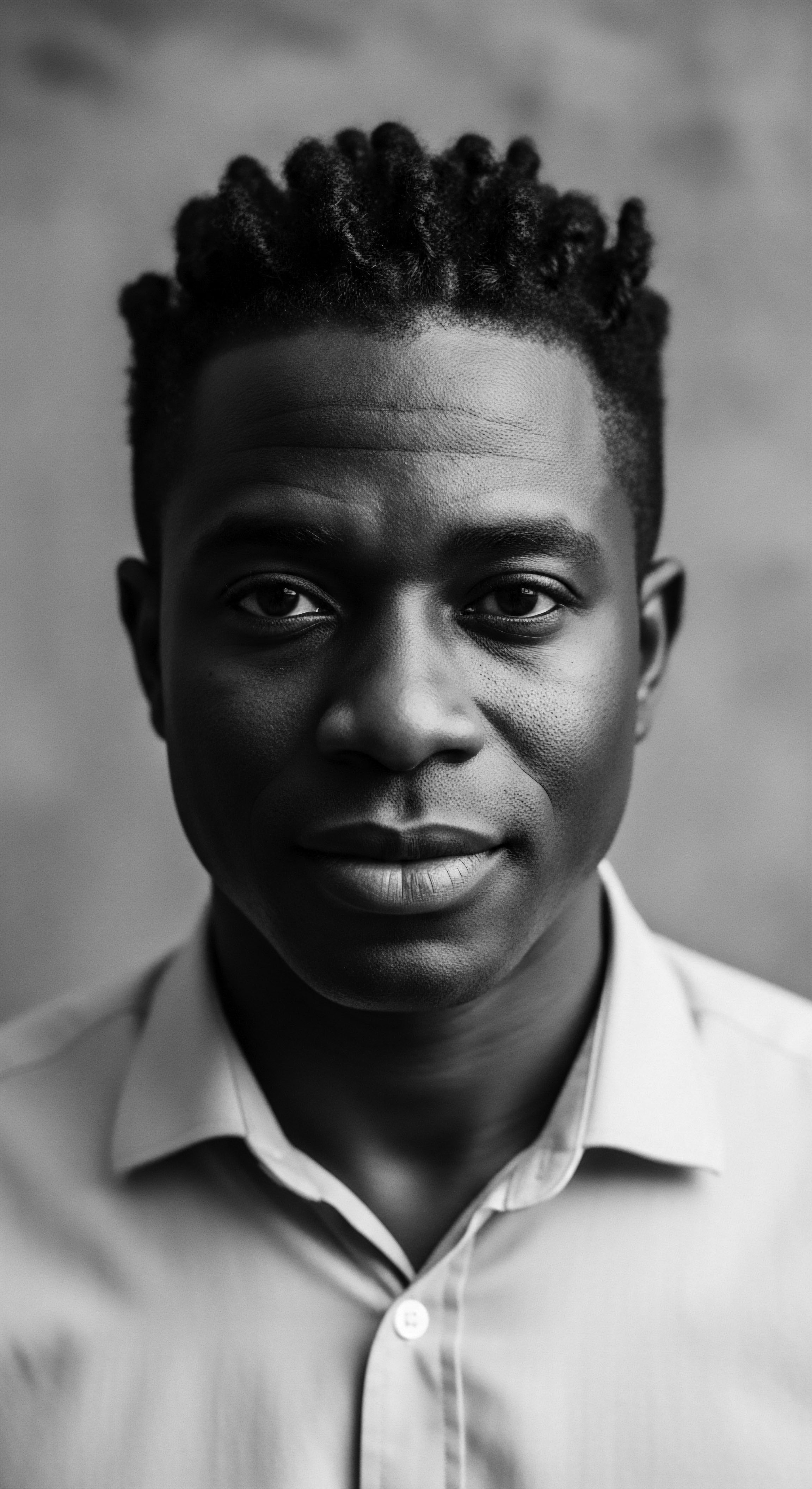
Ancestral Solutions for Textured Hair Challenges
Many common concerns for textured hair, such as dryness, breakage, and scalp irritation, were addressed by ancestral communities through their botanical cleansing and conditioning regimens. The gentle, nourishing nature of ingredients like shea butter, often incorporated into or after cleansing rituals, provided vital moisture and protection. Shea butter’s use for hair growth and smoothening has been statistically supported in ethnobotanical studies of women in Northern Ghana, where it was the most commonly used plant for cosmetic purposes, including hair growth (13.3% of respondents). (Sharaibi et al.
2024, p. 26). This quantitative insight underscores the empirical basis for its traditional application.
Beyond shea, the soothing properties of Aloe Vera, utilized by Native Americans to protect hair and body from harsh weather and for its cleansing qualities, offered relief for irritated scalps and dry strands. The consistent use of such botanicals, often in synergy, helped maintain scalp health and hair vitality, minimizing the very issues that modern textured hair enthusiasts still grapple with today. The solutions offered by our ancestors were not isolated remedies but integrated components of a comprehensive care philosophy.

Reflection
To journey through the landscape of ancient botanical cleansers for textured hair is to trace a path back to the origins of self-care, a profound meditation on the enduring spirit of textured hair itself. It is a story not of scarcity or lack, but of abundant wisdom, ingenuity, and a deep, resonant connection to the earth that provided. Our textured strands are not merely fibers; they are living archives, holding the genetic memory of our ancestors and the practices that sustained them.
Roothea’s ‘Soul of a Strand’ ethos finds its truest expression in this exploration, recognizing that the health and beauty of textured hair are inseparable from its profound heritage. The cleansing ingredients discussed — African Black Soap, Yucca Root, Qasil Powder, and Rhassoul Clay — are not simply ancient curiosities. They are vibrant testaments to the sophisticated ethnobotanical knowledge passed down through generations, each offering a blueprint for a cleansing experience that respects the hair’s unique architecture and the sacred history it carries.
This understanding allows us to approach textured hair with a reverence that transcends trends, honoring the resilience, adaptability, and inherent beauty that has always been its defining characteristic. It reminds us that proper care is not just about what we apply, but how we connect with the ancestral wisdom that informs our choices, allowing the legacy of our strands to continue to shine brightly into the future.

References
- Byrdie. (2024, June 1). 12 Native American Beauty Secrets. Byrdie.
- Gieskes-Mwamba, L. (n.d.). Suki Suki Naturals.
- Hartung, T. (n.d.). 8 Native Plants for Native Medicine. Hachette Book Group.
- National Park Service. (2025, April 28). Ancestral Pueblo Native Plant Use. National Park Service.
- Sharaibi, O. J. Oluwa, O. K. Omolokun, K. T. Ogbe, A. A. & Adebayo, O. A. (2024). Cosmetic Ethnobotany Used by Tribal Women in Epe Communities of Lagos State, Nigeria. Journal of Complementary Medicine & Alternative Healthcare, 12(4), 555845.
